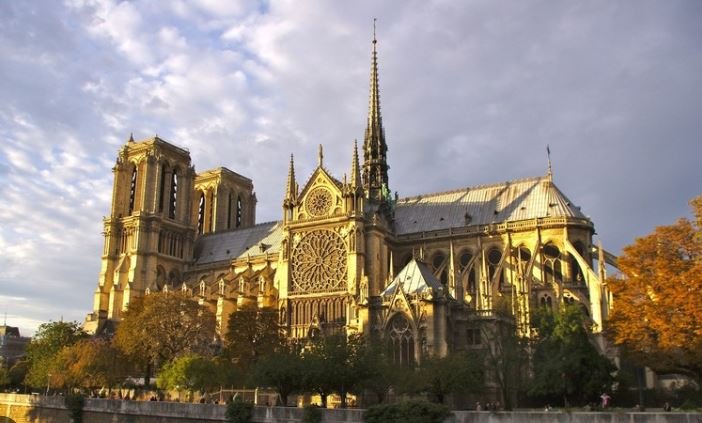The Evolution of Gothic Architecture
Gothic architecture stands as a testament to the artistic and engineering prowess of the Middle Ages. Characterized by its soaring vaults, pointed arches, and elaborate stained glass windows. This blog delves into the evolution of Gothic architecture, tracing its origins from Romanesque influences to the construction of iconic cathedrals that continue to awe and inspire visitors worldwide.

Origins in Romanesque Architecture
Gothic architecture emerged in the late 12th century as a departure from the Romanesque style prevalent in Europe. During the preceding centuries. Romanesque architecture, known for its thick walls, rounded arches, and sturdy pillars, served primarily functional purposes in church construction. However, as medieval Europe experienced economic growth and urbanization, architects sought to innovate and enhance structural design. To accommodate larger congregations and grander aesthetic aspirations.
Key Features of Gothic Architecture
The hallmark features of Gothic architecture include pointed arches, ribbed vaults, and flying buttresses. Pointed arches allowed for greater height and structural stability, distributing weight more efficiently. Compared to the rounded arches of Romanesque buildings. Ribbed vaults replaced the solid stone ceilings of Romanesque churches, reducing weight and enabling the construction of larger, more intricate roof systems. Flying buttresses, external stone supports, transferred the outward thrust of the vaulted ceilings to the exterior walls, allowing for expansive windows and intricate stained glass designs.
Gothic Cathedrals: Triumphs of Engineering and Faith
Gothic architecture reached its pinnacle in the construction of Gothic cathedrals, monumental structures. These served as spiritual centers and symbols of religious devotion across Europe. Examples include the Chartres Cathedral in France, known for its towering spires and luminous stained glass windows depicting biblical narratives. The Cologne Cathedral in Germany, renowned for its twin spires and intricate facade sculptures. These cathedrals exemplify the technical mastery and artistic innovation of Gothic architects, who combined mathematical precision with spiritual symbolism to create awe-inspiring places of worship.
Regional Variations and Innovations
As Gothic architecture spread throughout Europe, regional variations emerged. Influenced by local building traditions, available materials, and cultural preferences. The English Gothic style, characterized by its elaborate tracery and emphasis on verticality. Differed from the French Gothic style, noted for its soaring proportions and intricate stone carvings. In Italy, Gothic architecture coexisted with Romanesque and Renaissance influences, resulting in unique blends of architectural elements and decorative motifs that reflected the cultural diversity of the region.
Decline and Revival
By the late Middle Ages, Gothic architecture began to wane in popularity as Renaissance ideals prioritized classical forms and proportions. However, Gothic revival movements emerged in the 18th and 19th centuries. Fueled by nostalgia for medieval craftsmanship and romanticized notions of the past. Architects such as Eugène Viollet-le-Duc in France and Augustus Pugin in England spearheaded efforts to restore and recreate Gothic structures, leading to the construction of revivalist buildings like the Palace of Westminster in London and the Notre-Dame Cathedral restoration in Paris.
Legacy and Influence
The legacy of Gothic architecture extends beyond its physical structures to influence subsequent architectural movements and artistic expressions. The emphasis on verticality, light-filled interiors, and intricate ornamentation inspired architects of the Art Nouveau and Art Deco periods, who sought to merge innovative design with cultural symbolism. Today, Gothic cathedrals and churches continue to captivate visitors with their timeless beauty and spiritual significance, serving as enduring symbols of medieval craftsmanship and human creativity.
Conclusion
In conclusion, Gothic architecture represents a remarkable chapter in architectural history. Characterized by its technical innovation, spiritual symbolism, and enduring aesthetic appeal. From its humble beginnings in Romanesque architecture to the construction of majestic cathedrals across Europe, Gothic architecture continues to inspire admiration and scholarly inquiry into the cultural, social, and religious dynamics of the Middle Ages. As architectural styles evolve, the legacy of Gothic architecture remains a testament to the ingenuity and artistic vision of medieval builders and craftsmen.


